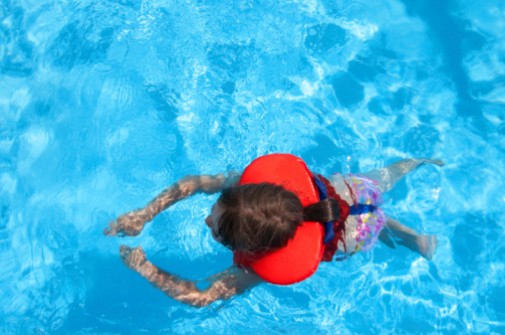Spot the unexpected signs of drowning

If someone near you were drowning, you’d know it, right? Not so, many experts say. Drowning can happen quietly and quickly. Many people expect that a drowning person will splash around and call out for help. After all, that’s the scene we often see in movies and on TV. But accidental drowning doesn’t usually happen that way. Most people who are struggling to stay above water won’t make much noise at all. In fact, drowning is often silent. The Centers for Disease Control and Prevention (CDC) reports that every day about 10 people die from drowning.
The highest rates are in children ages 1 to 4, and of those children, most drown in home swimming pools. The CDC also says that for every child who dies from drowning, five require treatment in a hospital emergency room. When you’re near water, always be aware of your surroundings. And even if there’s a lifeguard on duty, keep a close eye on your children at all times. If you see any warning signs of someone struggling in the water, help them if you can, or get someone else to help immediately. Seconds really do count.
How can you spot a person drowning?
Some warning signs include the person’s:
- Mouth at water level (you may notice that the person’s mouth alternates between being above the water surface and below again as they are struggling to stay above water and breathe)
- Head tilted back as if trying to float
- Eyes closed or glassy
Experts say the best way to know if someone is OK is to ask. Most people who are in trouble will have difficulty talking.
How to help a person in trouble:
- Stay calm and act quickly.
- Call for help.
- If you can get in the water to help the person out, do that. But do not put yourself at risk. Too many would-be rescuers die or are injured trying to save someone else.
- If you can’t get in to the water safely, try to get something to the person that he or she can grab onto. For example, extend a pole or branch to the person or use a rope attached to a life ring or life jacket.
Most drowning accidents are preventable Dr. Stephen Crouch of Advocate Good Samaritan Hospital in Downers Grove, Ill. says their emergency room sees two to three near-drowning victims each year. But fortunately, most drowning accidents can be prevented. Dr. Crouch offers some important tips to stay safe in the water and prevent drowning:
- Always supervise your children closely when they are in or near the water, and remember drowning happens quickly – sometimes within seconds
- Never leave a child unattended near water, even if he or she can swim
- Don’t consume alcohol or drugs when swimming or participating in water sports; even prescription drugs can be dangerous
- Don’t count on lifeguards to save you and your children; they have to watch every person there, and they cannot see every person, every second
- Learn CPR – it has saved the lives of many near-drowning victims
- Never swim alone; even strong swimmers can have drowning accidents
- Learn to swim and teach your children to swim at a young age – the younger, the better
- Use lifejackets to reduce the risk when boating
Learn more about water safety guidelines and drowning myths on the Drowning Prevention Foundation’s website. And have a safe and healthy summer!
Related Posts
Comments
3 Comments
About the Author
health enews staff is a group of experienced writers from our Advocate Health Care and Aurora Health Care sites, which also includes freelance or intern writers.


















These tips are so important. I babysit a 3 and 5 year old two days a week. They are at an age when they want to do everything themselves, including swimming, so I’ll definitely keep these in mind the next time I take them to the pool.
these are great tips to know for anyone in case of emergencies!
We all need to watch out for one another – especially kids. Great tips to share.